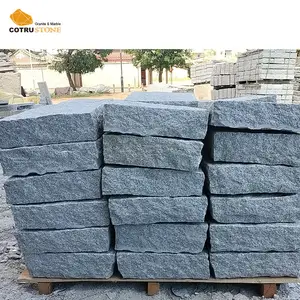
Chinese Gey Granite G603 Cheap Price For Border Road Granite Curb Stone And Kerb Stone Kerbstone Granite And Curbstone



















Curb stones, integral to urban and suburban landscapes, serve as the defining lines between streets and sidewalks. These stones not only enhance safety by delineating pedestrian areas but also contribute to the aesthetic appeal of outdoor spaces. This introduction delves into the various aspects of curb stones, from their types and applications to the materials used in their construction.
The application of curb stones is diverse, ranging from residential properties to expansive commercial spaces. They are pivotal in water management, guiding runoff to appropriate drainage systems, and are essential components in the construction of parking lots, gardens, and roadways. The types of curb stones vary, including but not limited to, extruded, natural stone, and precast, each serving specific functional and decorative purposes.
Curb stones are characterized by their durability and resistance to weather conditions. Materials commonly used in their manufacture include granite, limestone, and concrete, each selected for its unique properties and suitability for different environments. For instance, granite curb stones are renowned for their strength and longevity, making them a preferred choice for areas with heavy traffic.
The installation of curb stones offers numerous advantages such as enhanced road safety, improved aesthetics, and delineation of space. They are designed to withstand significant wear and tear, making them a long-lasting investment for any infrastructure project. Additionally, the variety of finishes and colors available allows for customization to complement the surrounding architecture.
In today's eco-conscious world, the environmental impact of construction materials is a significant consideration. Many curb stone options are sourced and manufactured through processes aimed at reducing carbon footprint, with some materials being recyclable, further contributing to sustainable building practices.
Selecting the appropriate curb stone for a project involves considering factors such as load-bearing capacity, compatibility with the environment, and aesthetic harmony with the existing landscape. It is crucial to evaluate the specific needs of a project to ensure the chosen curb stone enhances both functionality and visual appeal.